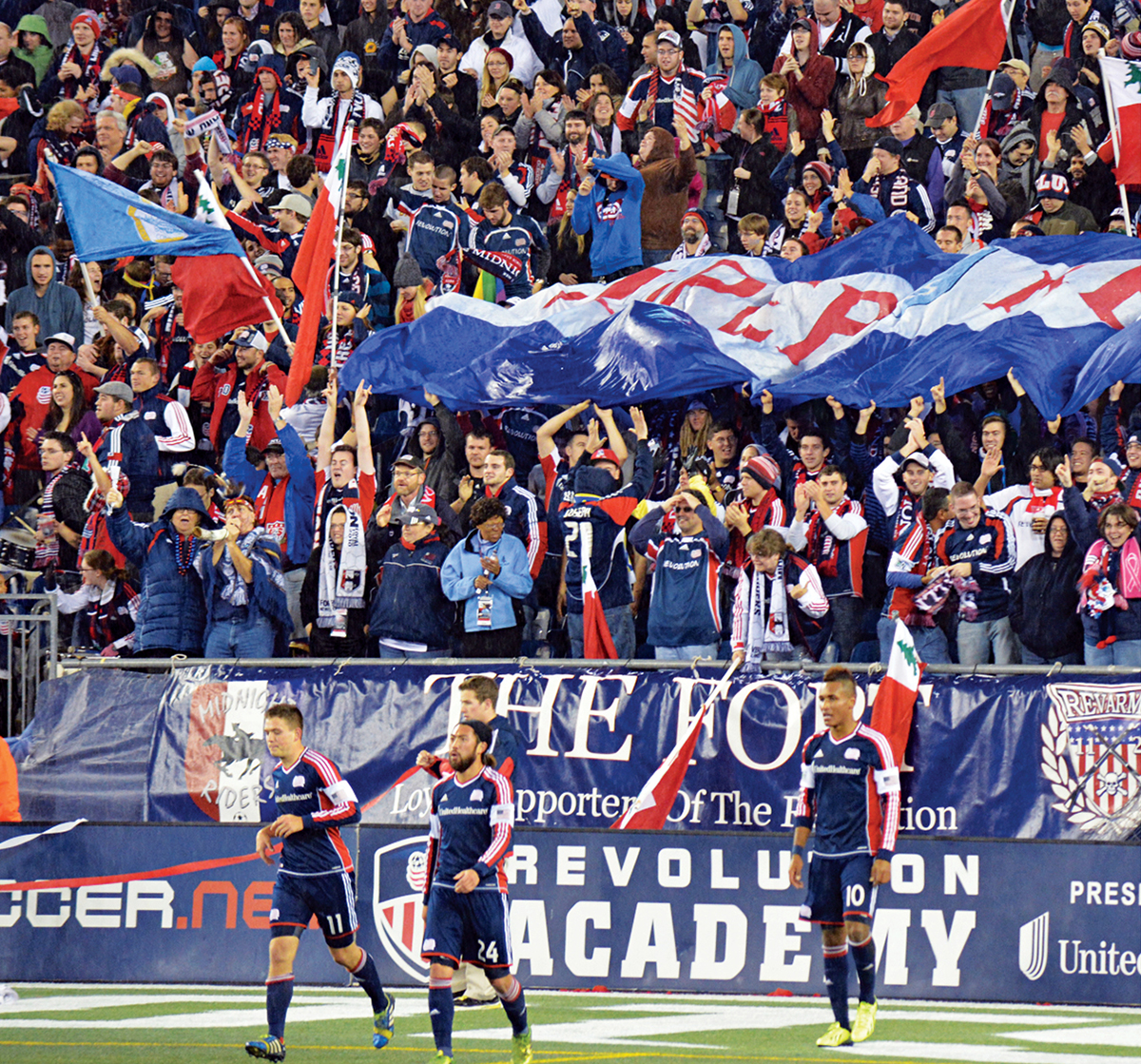The Krafts Are the Worst Owners in the League

Revolution fans try, but their supporters’ groups pale in comparison to other teams’. / Photograph by Alan LaValley
Aside from the issue of whom exactly they were targeting, the league had another problem: where they played. All 10 teams were playing in football stadiums, with vast expanses of seats that made the modest attendance numbers feel even smaller.
To combat that problem, MLS 2.0 arrived in the mid-aughts: As the league expanded, between 2003 and 2008, six teams constructed new soccer-specific stadiums. But in solving the stadium problem, the teams created a new challenge. In order to get cheap land on which to build the stadiums, they tended to look outside their city limits to suburban areas, plunking down their bowls in such marquee rest stops as Frisco, Texas; Commerce City, Colorado; and Harrison, New Jersey. While fans in those cities could now enjoy an intimate soccer-viewing experience, it was hardly convenient. “It should’ve been a huge step forward,” Martino says. “But, for the most part, because of where they were located, it was more like one step forward, two steps back.”
On the third try, MLS 3.0, the league finally got it right. Expansion teams like the Seattle Sounders (2009) and the Portland Timbers (2011) exploded onto the scene with wildly passionate supporters’ groups and sold-out, raucous stadiums within city limits; Sporting Kansas City and Houston added their own city-based stadiums in 2011 and 2012. And MLS had finally found its growing fan base: urban hipsters. Turns out, if you’re trying to fill a supporters’ group, your perfect candidates are city-dwelling, unmarried 18-to-35-year-olds with disposable incomes, eclectic sensibilities, and a penchant for creating clever banners.
Having this solid supporters’ group is particularly crucial because, more than most, soccer is a sport that feeds off its crowd. Unlike other, TV-commercial-friendly American sports, the games last for two 45-minute halves with no breaks or timeouts, and supporters’ groups spend that entire time on their feet, singing songs and coordinated chants that celebrate their team, poking fun at opposing players, and calling the ref a bastard. They set the tone for the whole stadium, and really the whole fan base. In MLS, the most famous of all these groups is likely Portland’s Timbers Army. On game days, some 5,000 Army faithful fill eight sections, or roughly one quarter of the 19,000 seats at Providence Park.
Now compare that to the Revs’ largest supporters’ group, the Midnight Riders: Their numbers, according to group president Fran Harrington, fluctuate between 300 and 400.
In one section.
In a stadium that seats almost 69,000 people.
Harrington says sometimes people get upset that the Midnight Riders don’t create the ridiculously elaborate tifo displays of groups like the Timbers Army. “They’re like, ‘Why aren’t you doing that?’” he says. “Oh, I dunno, [maybe it’s because] we can’t even fill our supporters’ section?” He lets out a long sigh. “We got to walk before we can run.”
The drive from Boston to Foxboro is about 40 minutes, if you’re extremely lucky, and even under the best circumstances it’s a royal pain. One of the elements keeping the Revs’ numbers down, Harrington says, is the utter lack of public transportation to the stadium. There’s no T, no bus, nada. “There are no options,” Harrington says. “There’s a commuter-rail stop, but it only operates during Patriots games.” For Harrington, who, like many young urban professionals, doesn’t have a car, securing passage is crucial: “If you can’t get a ride, the closest thing you can do is go to Walpole, and take a $50 cab from there. Or sometimes I’ll take a Zipcar, but that’s kind of expensive, too.”
Even if public transportation were available, Harrington admits it would only be a temporary salve. “I don’t think the organization can move forward a whole lot without getting out of Gillette,” he says. But for now, the Revs’ number one fan can’t even get to the games.
In talking to both former and current players in the league, it became clear that fans aren’t the only ones less than satisfied with their experience at Gillette. Most players hate artificial turf fields, especially ones designed for NFL teams, which prefer faster, harder playing surfaces. The Revs are one of just four MLS teams not playing on natural grass. One still-active MLS veteran told me that turf “takes a year off your career, at least.” And no one likes to feel like a second-class citizen in their own stadium—an emotion that may be unavoidable in a venue where there is a sign below the scoreboard that reads “HOME OF THE NEW ENGLAND PATRIOTS” in giant silver letters. “It’s just a different feeling walking into an NFL stadium,” says the veteran, “where there’s no real permanent signage for the team, you see the football lines and feel the hard turf, and you can hear echoes of emptiness.”
Ask around about the vibe at Gillette, and other players will concur. “Personally I was always excited because I knew I’d have family and friends there,” says Roger Levesque, a former Seattle Sounder who grew up in Maine. “But in terms of atmosphere, it wasn’t a game you particularly got amped for. I’d compare it to when we were a USL team in Seattle, playing at Century Field, where the fans were just on one side of the field. Just kind of uneven.” In other words, a minor-league experience.
“I remember being there at the MLS Cup during my rookie season, and it was huge, and packed, and incredible,” Martino says. But now, he says, “You can literally hear people’s individual cell-phone conversations. It’s sad.”


